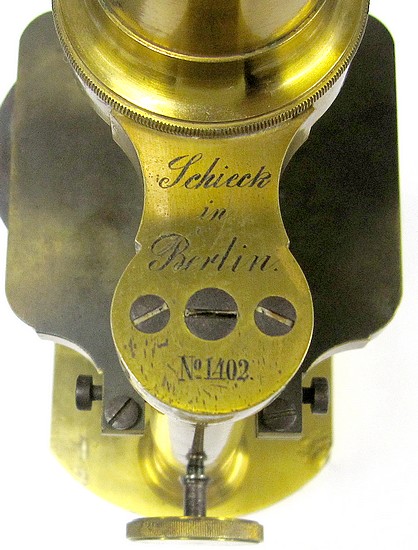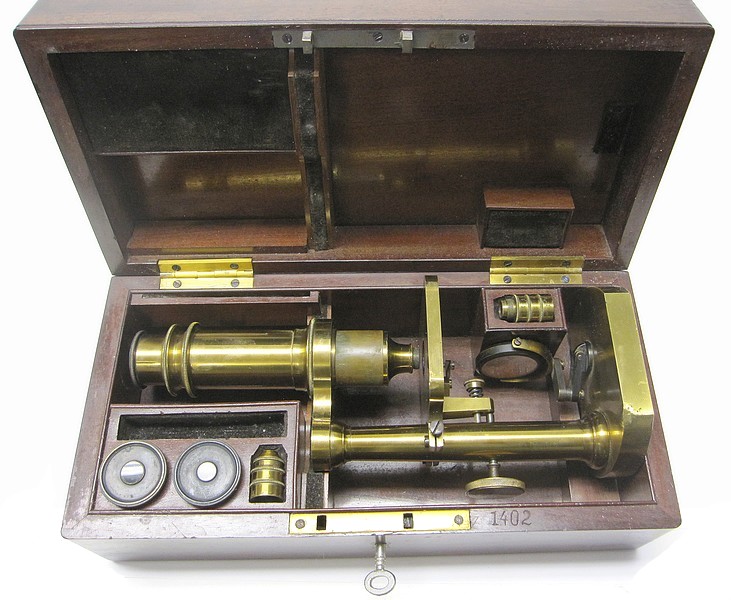
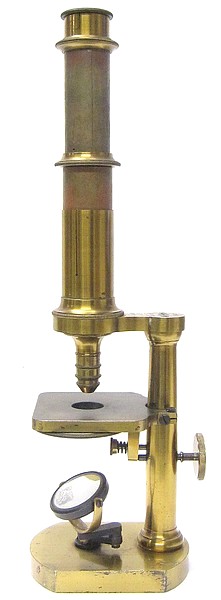
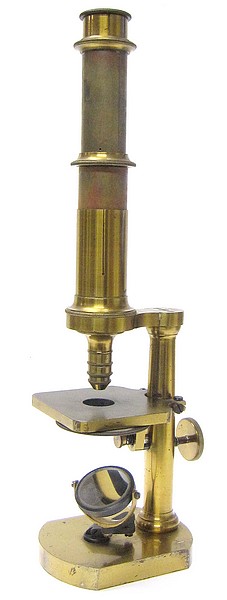
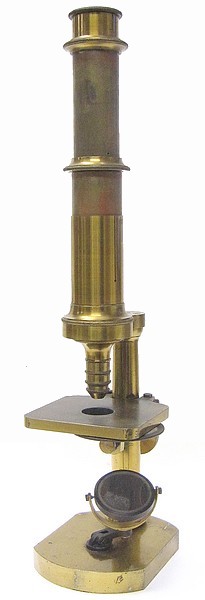
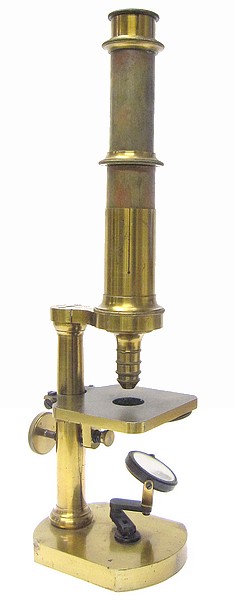
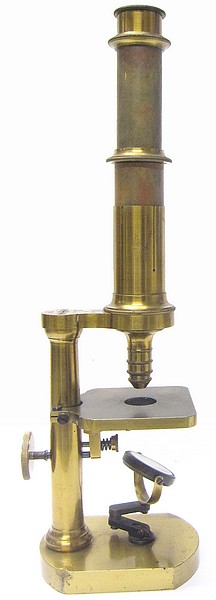

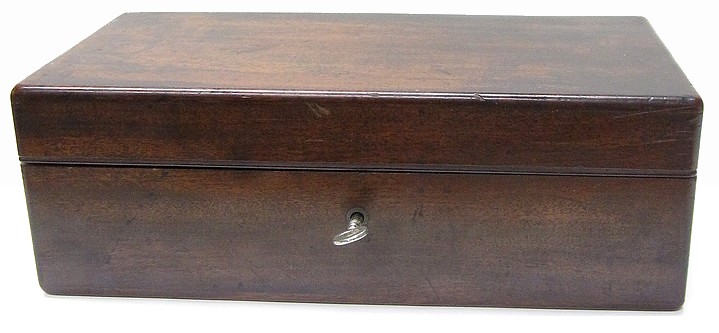
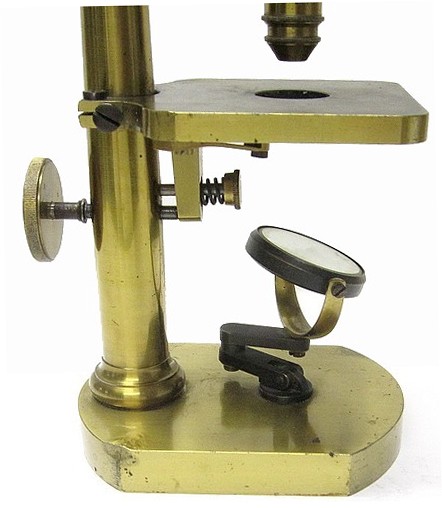
This microscope is signed on the limb “Schieck in Berlin. No. 1402”.
It measures about 12-inches in height when the draw tube is fully extended as shown in some
of the photos and 9-inches when fully closed and stored in the case. The main focus
is by sliding tube, while the fine focus is achieved by tilting the stage. The mechanism
of the fine adjustment works through a knurled knob that penetrates the lower column,
which works against a spring to tilt the stage. Below the stage is
a wheel of apertures in contrast to earlier versions of this
model, which used aperture stops. The plano-convex mirror is on an adjustable,
articulated arm mounted to the base.
A number of other Berlin makers used
a similar fine adjustment mechanism with their small model microscopes. Among these
makers were Paul Waechter, Friedrich Wappenhans, Franz Schmidt & Haensch, and Bénèche
& Wasserlein. The same fine adjustment mechanism was used by the firm Pistor & Schiek
as early as the beginning of the second quarter of the 19th century.
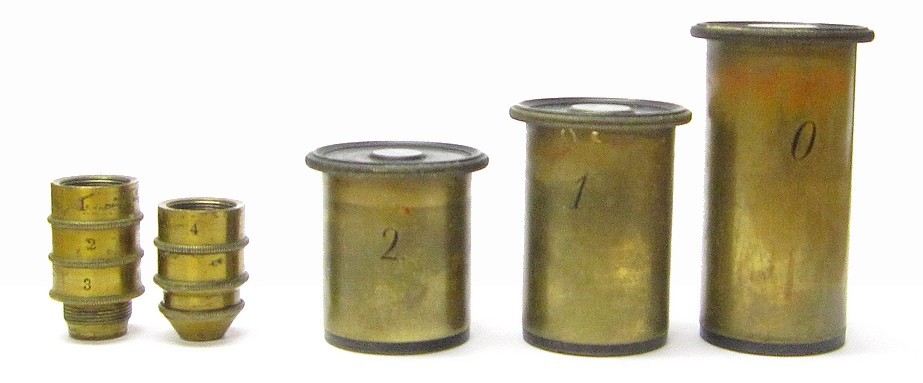
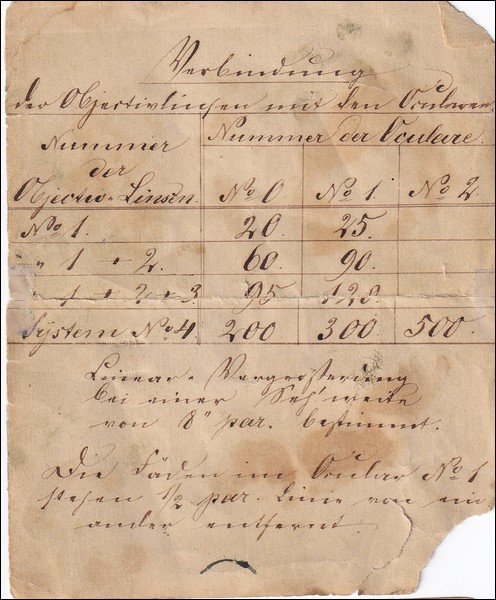
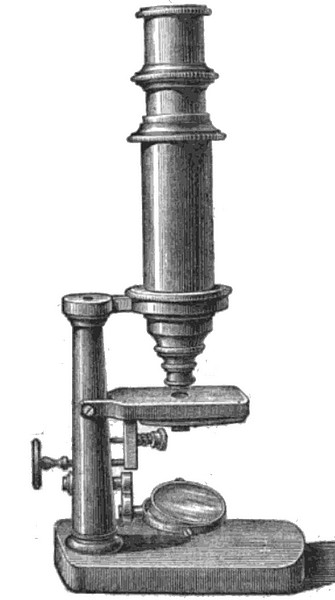
The microscope is equipped with three eyepieces numbered 0, 1, and 2 and objectives numbered 1-4. The objectives numbered 1-3 are divisible and can be used in various combinations to give the magnifications as shown in the magnification chart. The number 4 objective is compound and is use as is; it gives the highest magnifications. In addition to the magnification chart, hand written instructions were also found with the microscope.
Friedrich Wilhelm Schiek (1790 - 1870; also at times spelled Schieck) was the first member of his family to produce scientific instruments. After serving an apprenticeship, he moved to Berlin where he worked with Carl Philipp Heinrich Pistor (1778-1847). By 1824, he was a full partner with Pistor. At that time, instruments were signed Pistor & Schiek. By 1837, the partners separated and Schiek began to produce his instruments under his own name in Berlin; the microscopes were usually marked “Schiek in Berlin”. Beginning around 1860, the father began to work with his son, Friedrich Wilhelm Hermann Schiek, who by 1865 assumed full management of the firm under the name F. W. Schieck Optisches Institut or simply just F. W. Schieck. The elder Schiek died in 1870. The son died in 1916, but the firm continued well into the 20th century.
On the basis of the serial number and signature, this microscope was made just prior to the time that the firm was taken over by the son.
